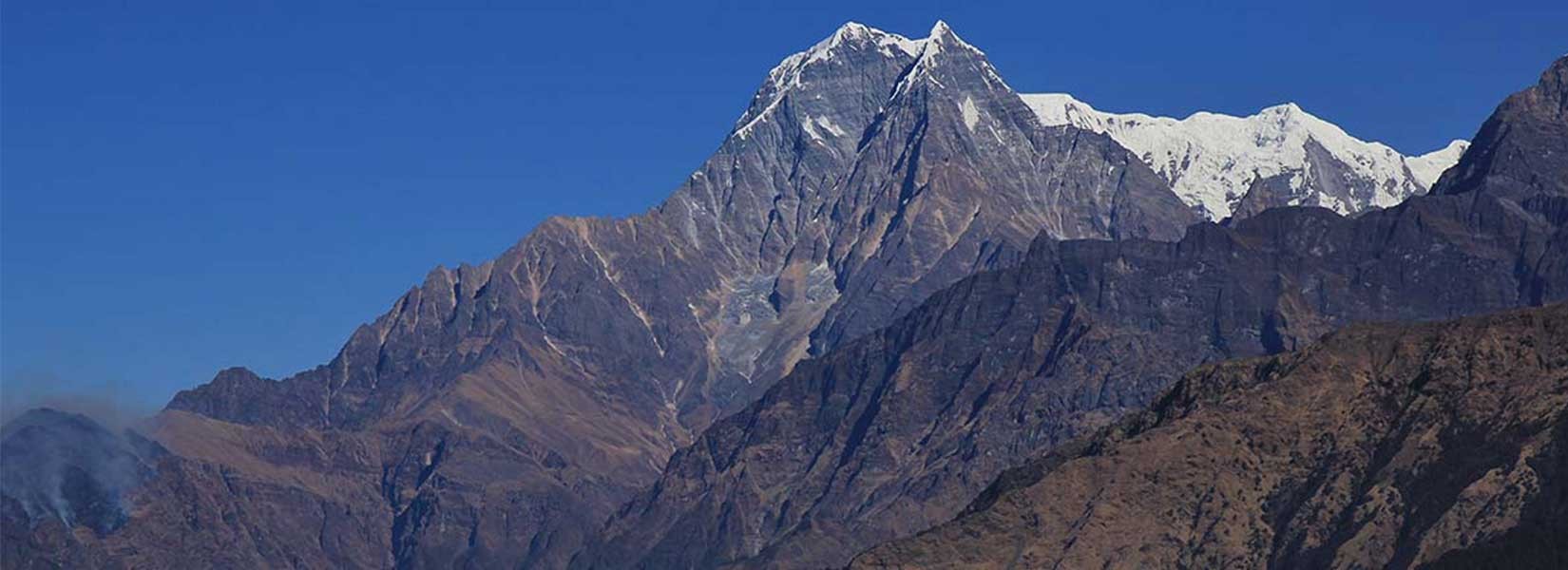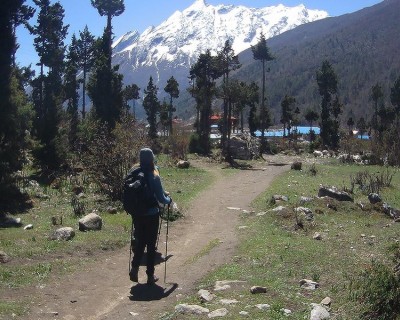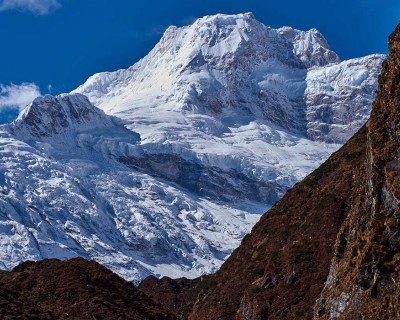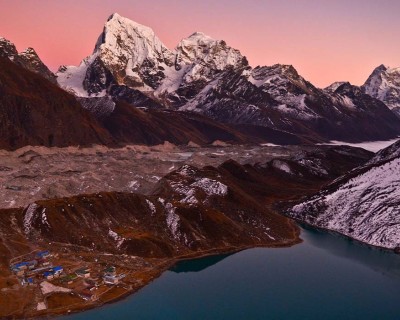Khopra Ridge Trek is tucked away in the heart of the Annapurna region. It is just beyond the popular trails that attract thousands each season. This trekking journey avoids the bustle of major paths and instead offers tranquility rather than chaos. Khopra Ridge is a hidden gem that's not commonly set on most trekkers' sights and offers a rare union of solitude and scenery in a mainstream region.
Situated between more renowned Ghorepani Poon Hil and mighty Dhaulagiri range, this trek unfolds through lush rhododendrons forest, charming Gurung and Magar villages and high alpine meadows. The destination is the open skies of Khopra Danda, a panoramic balcony which is perched at 3,660 meters.
But beneath this tranquility, how difficult is the Khopra Ridge Trek actually? Don’t be fooled by its peaceful demeanor; Khopra Ridge is a trek that demands more than it lets on. At first glance, the trail seems like a gentle escape. Yet, beneath that surface lies a trek with unpredictable terrain, altitude gains and profound isolation.
Although it doesn’t intimidate with extreme numbers, it quietly pushes you limit. Both physically, mentally and emotionally. The peacefullness of the route is matched by he sharpness of its ridgelines. And, the gentleness of the villages along the way is countered by the hardness of its ascent and remoteness.
In that way, the Khopra Ridge difficulty is not a design flaw. But, it's a remarkable feature that comes along with the journey. These subtle nature challenges make the experience really rewarding. This trek asks you to listen closely, climb steadily and walk with presence.
Khopra Ridge Trek is not about conquering the mountains, it is about meeting and embracing them on their terms.
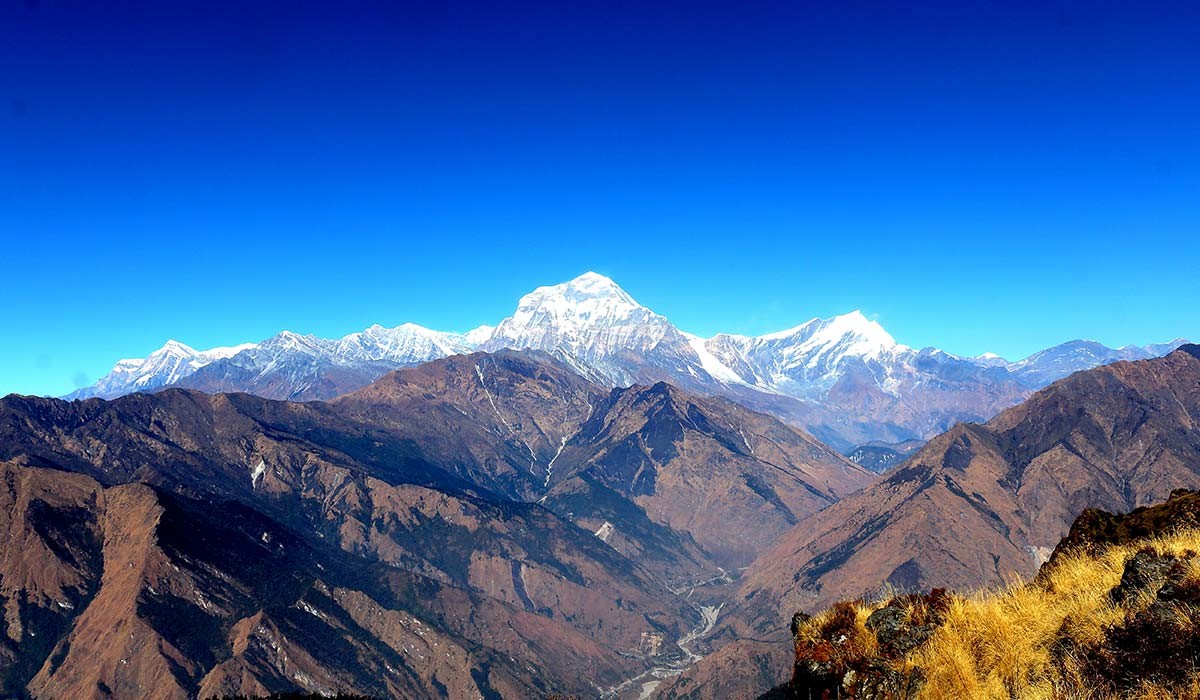
What Makes Khopra Ridge Trek Difficult?
Unlike most Himalayan treks, which gain notoriety for their extreme altitudes and difficult routes. TheKhopra Ridge Trek boasts a class of its own thanks to its distinctiveness. This trek, while subtle, demands both physical stamina and mental resilience. Here are some key difficulty aspects of this trek that you need to be mindful of.
- Sharp and Intermittent Elevation Gain: The trail of Khopra Ridge is structured with significant upward pushes over relatively shorter distances. For example, the route from Tadapani to Bayeli Kharka and on to Khopra Danda involves a steep ascent. These ascents come without gradual acclimatization breaks. So, even though overall distances are moderate the vertical gains can be quite taxing.
- Exposed High Ridges: One of the hallmarks of Khopra Ridge Trekking is its open and exposed nature. You will walk along the ridge section where there is little natural cover. Yes, these ridges do offer spectacular views of Annapurna and Dhaulagiri. However, if there are sudden weather changes like strong winds, cold temperatures, or brief rain periods, these segments are hit hard.
- Limited Infrastructure and Isolation: What differentiates this pathway from all other open roads taken by the mainstream trekkers is that it is a rather lonely road. The trail of Khopra Ridge meanders through sparsely populated areas where the lodging and medical facilities are limited. Thus, limited right facilities make trekkers learn to depend on themselves, both mentally and physically. Especially so when facing unexpected challenges during the journey.
- Mental and Emotional Fortitude: The combination of steep climbs, high altitude, intermittent points of solitude and exposed conditions creates mental challenges. The absence of constant human interaction means that motivation must come from within. This, during the strenuous section, tests your endurance. This mental strain, when compounded over several days of trekking, can prove as challenging as physical exertion.
- Cumulative Daily Demands: Finally, the Khopra Ridge trek difficulty is not determined by a single arduous moment. Its difficulty is a summation of small daily challenges along the way. No single day of the trek is so strikingly difficult. But the repeated long evening hikes, steep climbs, and limited recovery facilities finally come down to the load. eventually. This leaves your body and mind fatigued by the time you reach the last leg of the journey.
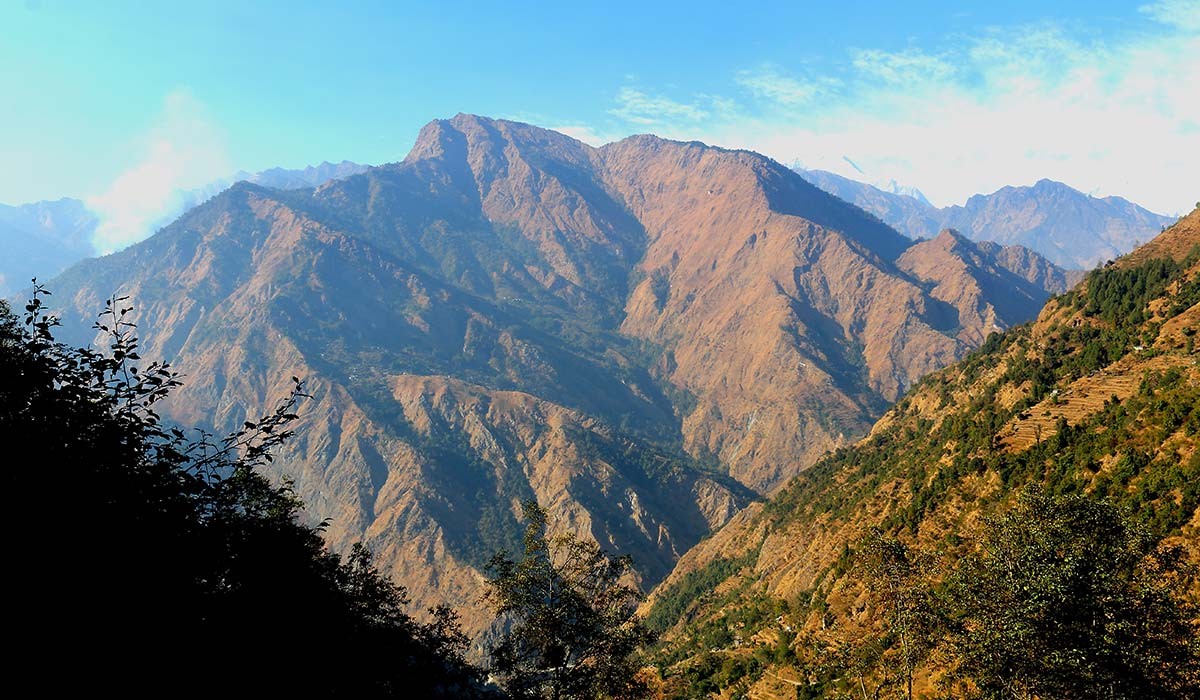
Altitude Profile and Acclimatization Challenges
At first glance, the Khopra Ridge Trek may seem modest in elevation compared to the Annapurna Circuit Trek or the Everest Base Camp Trek. But don’t underestimate it. Altitude still plays a central role in shaping both the experience and the difficulty of the trek.
Starting Low, Rising High
The Khopra Ridge Trek starts from Nayapul (1,100 meters). You will then continue toward the mid-hill settlement of Tikhedhunga (1,450 meters). The mid-hill section is wrapped in dense forests and warm culture. The true test, however, begins as you ascend toward Khopra Danda (3,660 meters). It is a wide-open ridge perched dramatically above the treeline.
From here, the optional side trip to Khayer Lake (4,660 meters) is the trek’s spiritual heart as well as physical summit. The climb to the lake isn’t just a scenic pilgrimage, it’s a taxing altitude gain of 1,000 meters in a single day. That spike can be really challenging and taxing if not approached with care.
Gradual, Until It Isn’t
The general ascent of this trek through forest and alpine pastures is measured. At least in the early segments. But the section from Sauta (2,215 meters) to Khopra Ridge is one of the most physically demanding sections of the trek. The altitude gain is sudden and the terrain shifts from earthy trail to exposed ridges. This segment amplifies both fatigue and the psychological weight of the elevation gain.
Is Acute Mountain Sickness a Risk?
Yes, AMS is a risk i this route, but in a quiet and deceptive way. The Khopra Ridge route rarely lingers over 4,000 meters. It doesn’t set off immediate altitude alarm bells like some other popular high-altitude treks. However, the risk of AMS still looms, especially if the trek is rushed. Attempting the Khayer Lake detour with a proper rest at Khopra Danda can also trigger the symptoms of AMS.
The best way to acclimatize is to spend an extra night at Khopra Danda, hydrate necessarily and ascend slowly from lower points. You also need to listen to your body, not your itinerary.
How Khopra Ridge Compares to Other Treks?
Daily Trekking Hours and Trail Terrain
Khopra Ridge Trek may not require mountaineering skills. However, consistency, stamina and mental pacing are part of the journey. Let’s unfurl the day-to-day rhythm of this off-beaten experience.
Trekking Hours- Gradual Build-Up
Most days of the trek clock in between 5 to 6 hours of hiking. Some early sections of the trek (Tikhedhunga to Ghorepani, Ghorepani to Sauta) are short but steeper. The longer part of the trek begins as you close in on Khopra Danda and attempt Khayer Lake. This section can take around 7 to 8 hours for a round trip.
There is no technical scrambling involved in any part of the trek. However, the accumulated strain of steep switchbacks, narrow ridges and high-altitude fatigue turns each day into a slow burn of effort.
Trail Type
Lower Sections: These parts wind through thick oak, pine and rhododendron forests. Although they are shaped, fragrant and soothing, they can be damp, mossy and filled with stone steps in some portions.
Mid-Range Zones: You will walk on the expansive alpine meadows and highlands. But the exposed trail tests your balance and endurance, especially during windy conditions.
Ridge Walk: It is stunning to walk across open ridges. But it can also be unforgiving in strong winds or under a glaring sun. There is no cover and there are no shortcuts.
Khayer Lake Extension: Takes you across high-altitude gravel paths, loose rock and unpredictable footing. No ropes are required for this segment. But this is the part where your endurance is stretched thin.
Seasonal Influence
- Monsoon (June to August): During this point, trails can be muddy, leech-infested and prone to landslides. Visibility drops as the clouds and fog take over the skies. Similarly, slippery stone steps test your patience in the steep sections.
- Autumn (September to November): This is one of the ideal periods for trekking adventure in the Himalayas. The trails are dry and crisp air accompanies you. However, the steep section feels sharper in the thinning air.
- Spring (March to May): It is the season of bloom. Forests are adorned with rhododendron and warm weather accompanies you. But the snow patch can linger near Khopra Dana or Khayer Lake.
- Winter (December to February): Winter is the season of harsh winds and snow-covered trails. Although the trek is physically doable at this point, logistically it is more demanding.
Is it Technically Difficult?
No, you don’t need ropes, crampons, or alpine gear to complete this journey. Just stamina, sure-footedness and solid trekking shoes will lead you to your conquest. However, you need to understand that it is not a casual hike. This journey requires you to be in decent shape.
You will also need to be mentally present and prepared for long days of trek that test your energy reserve. In essence, the Khopra Ridge Trek doesn’t defeat you with complexity. But it wears you down with consistency. You can take the journey as a long conversation between your will and the mountain’s quiet persistence.

Weather and Seasonal Influence on Difficulty
In the highlands of the Annapurna region, weather isn’t just a backdrop. It is a core character that can shift the tone of your entire journey. Understanding the seasonal variation and how it affects the trek is a central aspect in understanding how difficult is Khopra Ridge Trek is.
Autumn (September to November): Clear Skies and Crisp Nights
- Pros: The sky is clear and sharp and the trails are dry. The views are unparalleled. Autumn is also the most visually rewarding and stable season in Nepal.
- Cons: Cold nights at higher altitudes, where temperatures can dip below freezing. Mornings are brisk, requiring solid layering and a good sleeping bag.
- Difficulty Note: Khopra Ridge trek is manageable but chilly at night. Air is thinner above 3,000 meters, which tests your recovery and comfort. This is the season when proper layering, gloves and thermal base layers are crucial.
Spring (March to May): Colorful and Comfortable
- Pros: The rhododendron forest bursts into bloom and the temperatures are moderate across the day. This is the most photogenic period of the year.
- Cons: There might be remnants of snow patches at the higher sections. Especially near Khaye Lake. There is also occasional fog during cold mornings, which can obscure the views.
- Difficulty Note: Spring is a gentler season in overall. But, melting snow and moist trails can still present challenges. Trekking poles and good boots with traction matter for this season's venture.
Winter (December to February): Harsh, Silent and Demanding
- Pros: This season offers solitude and winter serenity. If you are craving an intimate connection with the Himalayas, this season delivers it.
- Cons: Trails over 3,000 meters are covered in deep snow. Many teahouses at higher elevations lose. Similarly, weathe can shift rapidly and there is a high risk of cold-related fatigue.
- Difficulty Note: Trekking in this season is only suited for well-prepared and cold-tolerant trekkers. You will need microspikes, extra insulation and unwavering mental grit to overcome the winter challenges.
Monsoon (June to August): Lush, Slippery and Risky
- Pros: During monsoon, the forests are wild burst of green. Waterfalls rage and there are only a few people on the trail.
- Cons: Risk of mudslides and floods. The lower trail is leech-infested and the visibility is low. Wooden bridges can be slippery and trails in general turn to slush.
- Difficulty Note: Trekking in monsoon is not technically harder. But, it is riskier, muddier and emotionally more draining. Footing can be unstable on the slippery road. And, morale can dip fast if you are not mentally prepared for wet gear and soggy days.
Physical Fitness Requirements
For trekking Khorpa Ridge you don't need the stamina of an athlete or the technical skills of a mountaineer. But, it does expect a strong base of cardiovascular fitness, leg endurance and mental tenacity. You will need to work on these aspects to enjoy a comfortable journey. Of course, without being too focused on the physical drain.
Key takeaway is that, although it is achievable for many, it still demands a solid level of physical readiness and mental resilience.
Who is Khopra Ridge Trek Suitable For?
- Adventurous first-timers who possess a fair amount of fitness
- Intermediate trekkers who are in search of a trail that is less busy and has greater scenic beauty
- Photographers, solo travelers and nature lovers are ready to walk for 6 hours a day on average
If you are a beginner trekker with decent stamina, a sense of adventure and a few weeks to prepare, this trek is very much within your reach. In case you have completed a moderate level of treks before, you are more than ready to take it on.
Even older adults or younger teens can handle it well if they are active and accustomed to walking for several hours a day. Remember, prior trekking experience isn’t essential as long as you commit to physical preparation.
Fitness Prep: What You Will Need?
Khopra Ridge tests three major aspects of the trekkers; cardiovascular strength, muscle strength and stability/balance.
- Cardio Endurance: During a normal trekking day, you will hike for 5 to 6 hours on average. You will need to cover more distance near Khopra Danda and during the hike to Khayer Lake. As the segments mostly include inclined terrain your heart and lungs need to keep up
- Leg and Core Strength: Expect steep stone staircases, ridge ascent and long descents during the trek. Strong quads, calves and glutes help prevent fatigue and injury during the challenging stretches.
- Balance and Joint Mobility: Traversing across rocky paths and forest trails requires good foot placement and agility. It is especially crucial while walking on steep ridges and descending on slippery sections.
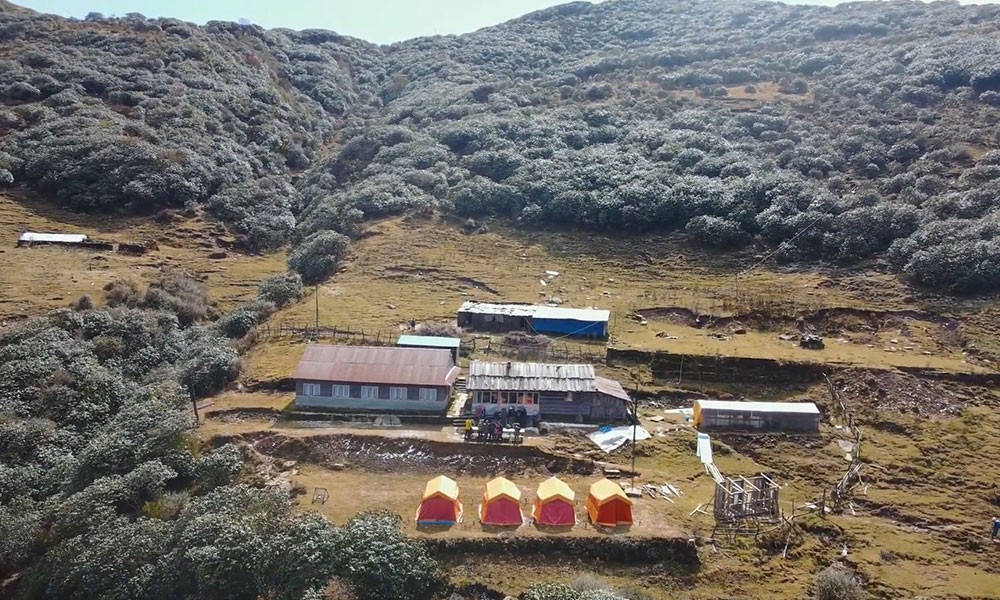
Mental Preparedness and Emotional Endurance
Trekking is never just physical, it is also a daily negotiation with your mind. Especially on quieter trails like Khopra ridge. The physical tardiness combined with altitude and a quiet evening can stir doubt and low energy. Practice journaling, slow breathing and meditating, which will help you overcome these.
It is also equally important to handle the psychological contrast between the peace of the surroundings and the demands of the journey. You will walk through the lush forest lit by morning mist. Sit beside the yak pasture while taking a rest. Then, it is suddenly grinding part uphill the demeaning incline.
It is necessary to embrace this duality, this is what makes the trek a profound experience. Trekking with an agency or licensed guide will help you overcome the mental barriers. A guided trip is safer, socially enriching and more structured. This can be especially helpful on remote stretches or during off-seasons.



